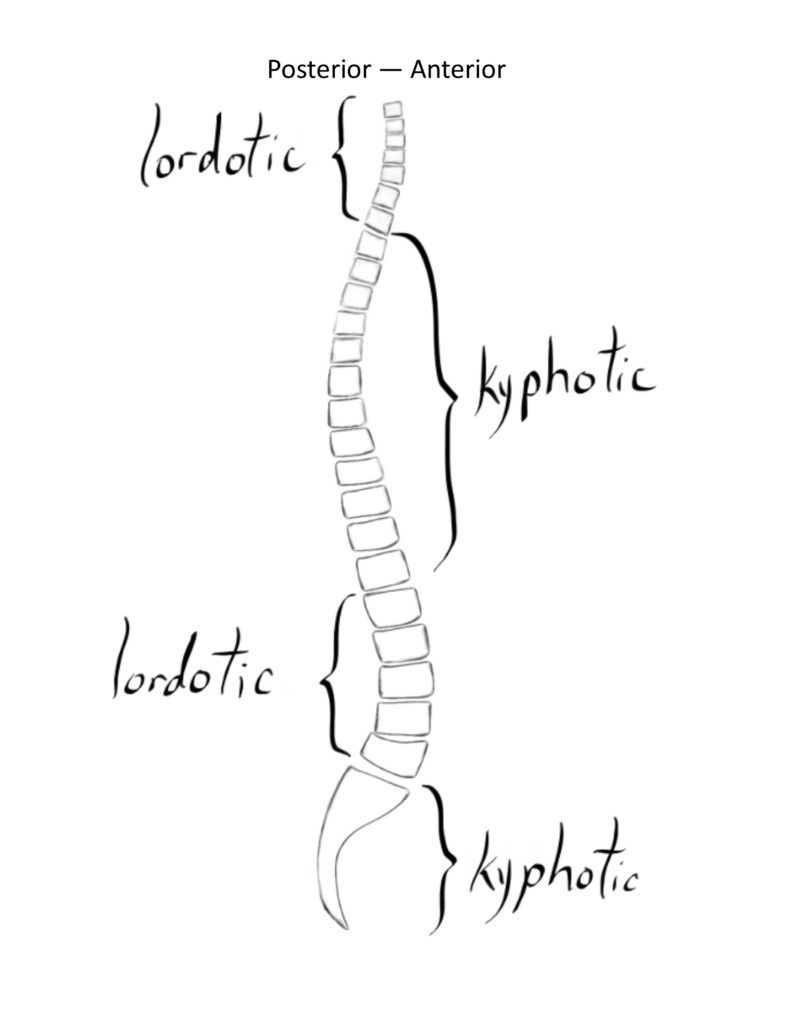*Disclaimer: If you have not read through Facts About the Spine [Part 1 of 2], I encourage you to do that first. The information presented in this article builds on top of the information there.*
A healthy adult spine has gentle curves throughout and, when viewed from the side, can be observed to form a distinguishable “S” shape. These curves are a normal part of the spine’s structure, helping the body to maintain balance and transforming the spine from a straight, inflexible rod, to a spring that is able to flex and extend. The primary role of these curves is to absorb and distribute mechanical stress when the body is at rest and during movement.
We know that the spine has four different regions – the cervical spine, thoracic spine, lumbar spine, and the sacrum and coccyx. Each region of the spine has one of two curves – a lordotic curve or a kyphotic curve.
A lordotic curve, also referred to as lordosis, is typically considered concave or curving inward. Natural lordotic curves can be observed in the cervical and lumbar regions of the spine, as illustrated above.
A kyphotic curve, also referred to as kyphosis, is typically considered convex or curving outward. Natural kyphotic curves can be observed in the thoracic and sacrum/coccyx regions of the spine, as illustrated above.
Spinal abnormalities develop when the natural curves of the spine become misaligned or exaggerated in certain areas. Three common spinal abnormalities are Lordosis, Kyphosis, and Scoliosis:
Lordosis – An exaggerated inward curve of the spine. This is most commonly observed at the lumbar spine, termed “swayback”, in which the buttocks appears more prominent and posture appears excessive. Although most common at the lumbar spine (low back), Lordosis can also occur at the cervical spine (neck).
Kyphosis – An exaggerated outward curve of the spine. This abnormality occurs at the thoracic spine, termed “hunchback”, in which the upper back remains rounded and the body is in a constant forward-flexed position.
Scoliosis – When the spinal column is viewed from behind, it appears vertically straight. Scoliosis is an abnormal curve of the spine to the left or right. It is most commonly observed in the thoracic spine.
Learning this terminology is as important to health and wellness as it is to fitness. If we are familiar with the curves of the spine, then we can ensure our physical fitness program is working to support, strengthen, and reinforce these natural curves. In addition to this, understanding common spinal abnormalities help us to notice any dysfunction or misalignment in our own movement patterns and put ourselves in a position to correct them instead of allowing them to develop into learned behaviors and bad habits.


